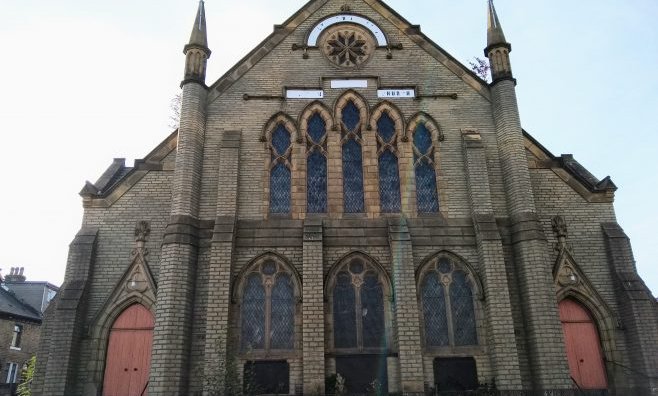Not the end of the story
What next for our church buildings after closure
If the difficult decision has been made to cease to meet the church closure guidance is a helpful document to guide those through the process.
Consult the guidance
The official guidance of the Methodist Church in Britain when determining the next steps for your closed church building.

Top tips
Inventory: Create an inventory, a list of contents in the church.
Photography: Take comprehensive photography of the interior and exterior of the building.
Recording: Can you have conversations or even interviews with members who can share the story of the church? Can you record or write these conversations down?
Dispersal of contents:
The records of the church should be sorted and transferred to local archives, contact your district office to find out if there is a district archivist who can support you.
There will be some clearing out to do with objects to be disposed of, recycled or donated.
It may be that certain objects should be retained because they tell a story about the church or they are significant in some way. These items may stay local in a church in the circuit or perhaps they should be transferred to one of the four Methodist museums.
The 'Treasures or Tat?' document provides some guidance about what to do with objects in Methodist churches.
What to do with this record...
Community archive sites
There are a number of digital archive sites that have thousands of entries commemorating our Methodist history. Browse the existing records and contribute your own stories to these sites linked below :
My Methodist History
Launched in December 2012 as part of a community archive network supported by the Methodist Church. The site is developed and edited by volunteers. The aim of the project is to share information and research about every aspect of Methodist history since re-union in
1932.
My Primitive Methodists
This community archive is a resource for the history of the 19th century working class movement known as the Primitive Methodists. Here you can browse through photos, memories, stories and historical information, and find out more about people and places connected with the ‘Ranters’.
My United Methodists
The aim of this site is to share information and research about every aspect of the United Methodists and those groups that formed them, from the 1790s to Methodist union in the 1930s.
Three main nineteenth century Methodist movements came together in 1907 to form the United Methodists – the Methodist New Connexion (1797-1907), the Bible Christians (1815-1907), and the United Methodist Free Churches (1857-1907).
My Wesleyan Methodists
The aim of the site is to share information and research about every aspect of Wesleyan Methodist history, particularly events having their roots from the 1790s to Methodist union in the 1930s.
Wesleys Oxford
This website tells the ongoing story of Methodism in Oxford and the surrounding area. Here you can browse through photos, memories, stories and historical information related to the subject. This website is maintained by the Methodist Church in Oxford and is supported by a group of volunteer editors.
British Methodist Buildings : A digital archive
A digital archive of over 11,000 images documenting Methodist buildings across England with further images for Scotland, Wales, and the Channel Islands. Hosted by Oxford Centre for Methodism and Church History (OCMCH) linked below :
Other ways to commemorate
There are ways that churches have been capturing and sharing the story of these churches to commemorate their impact.
- Could another church in the circuit commemorate the closed church building? Perhaps by naming meeting rooms after closed church buildings in the district.
- Publish a book of photographs, stories and history.
Do you have examples to share? Please share with us the way your circuit has commemorated closed churches.